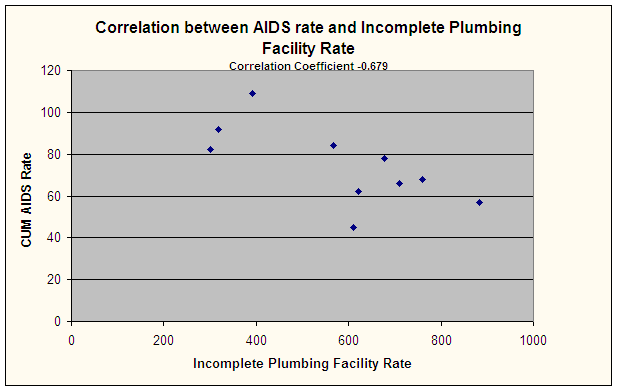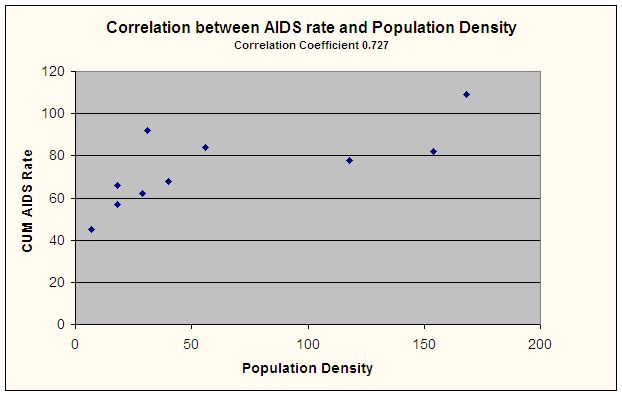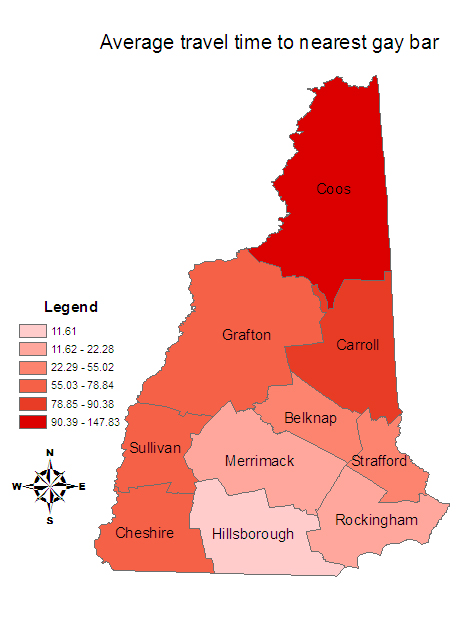| AIDSNew Hampshire | |||||
| Perceptions | Analysis | Assessment |
Data |
Sources |
|
I also could tell that the more urban areas tended to have a higher cumulative AIDS rate, so it made sense to correlate the data with percent of people living in an urban area. The correlation coefficient for the percent of people living in an urban area is 0.712, which is significant at the 99% confidence interval. It's also significant to note that there is a higher presence of the black population living in the urban areas compares to the rural communities. I also computed the population density of each county and found that there was a correlation coefficient of 0.727 between the cumulative AIDS rate and the population density.
Knowing that the distribution of AIDS is largely dependant on the community, I tried to find correlations that related to housing. I found that there was a negative correlation coefficient of 0.679 between the AIDS rate and households with incomplete plumbing facilities (i.e., households that use outhouses) which is statistically significant at the 95% confidence interval. There is also a positive correlation coefficient of 0.814 between cumulative AIDS cases and median gross rent, which is highly correlated with living in an urban area.
I was interested if there was a correlation between amount of time it takes to travel to the nearest gay bar and the cumulative AIDS rate. There are a total of four gay bars in New Hampshire, and to calculate the average travel time to the nearest gay bar, I took the adult male population over the age of 18 for the three largest cities or towns in each county. I then multiplied the population by the travel time for each town and found the average. The correlation coefficient between the cumulative AIDS rate and the average travel time to the nearest gay bar is -0.894, which is significant at the 99% confidence interval. This is the highest correlation I found. This correlation, factored in with the correlation between living in an urban area and population density, suggests that cities may be the epicenter of the AIDS epidemic in New Hampshire








